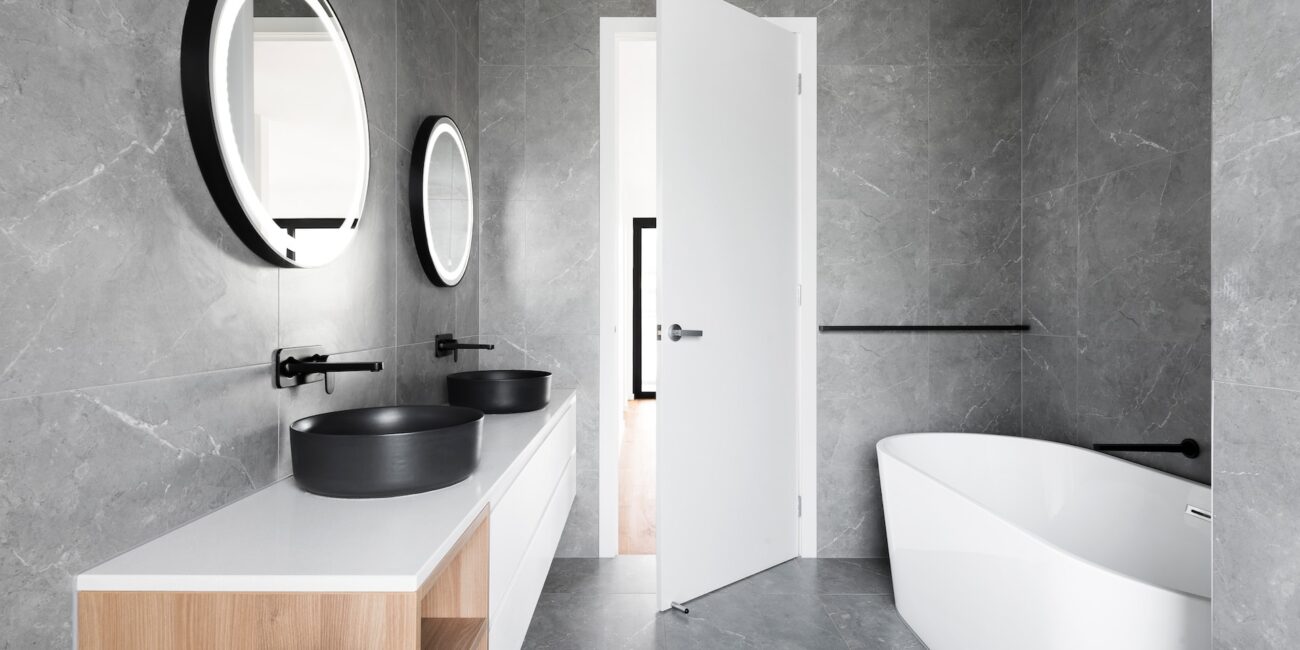A bathroom is one of the most essential rooms in a house, yet it is often neglected when it comes to maintenance and repairs. However, overlooking minor issues in your bathroom can lead to more significant problems down the road.
Living in a region like Tampa with a humid, subtropical climate can lead to moisture buildup in bathrooms. The persistent moisture in the air can cause mold, mildew, leaks, and other problems if you are not vigilant. BN9 reported that about 77,000 homeowners in Tampa requested permits for their home improvement projects in 2023, many of which were bathroom remodels. This stat is not surprising given the wear and tear bathrooms experience.
Whether you live in Tampa or any other high-humid area, keeping an eye out for these six signs will help you identify issues in your bathroom early and make repairs before they become major headaches.
-
Rust Accumulation
The high humidity levels in Tampa can cause metal fixtures, pipes, and surfaces to rust over time. So, check faucets, showerheads, drains, and other metal components for rust accumulation. Also, look for orange-brown flaky deposits or staining. Rust is more than just an appearance issue – it can lead to leaks, clogs and even affect the water quality from your taps. For example, rust particles and corrosion inside pipes can contaminate water.
Given the specific environmental challenges of the Tampa region, only hire local bathroom remodelers. Consulting with Tampa bathroom remodeling experts can offer specialized solutions tailored to the unique conditions of the area. Their familiarity with Tampa’s humid subtropical climate means they understand how rust develops, making them ideal for providing long-term solutions that can prevent rust in the first place.
Consider replacing old or corroded metal fixtures and pipes to stop the spread of rust. Choose corrosion-resistant materials like stainless steel. You can also remove surface rust from fixtures using vinegar or special cleaners. For pipes, have them cleaned and cleared of rust buildup. Implementing rust-inhibiting measures can also help, like regularly spraying fixtures and metal surfaces with protectants.
-
Musty Smells
If you notice a persistent musty or moldy smell in your bathroom, it is a clear sign that excess moisture has built up. Failing to address the source of the odor can allow mold and mildew to take hold and spread. Start by checking under bathroom sinks, around windows, in shower stalls, and along baseboards for any visible mold growth. Look for black, gray, or green fuzzy patches on surfaces. Also, inspect behind walls, under flooring, and other hidden areas that may have moisture damage.
First, improve ventilation to get rid of musty smells. Turn on exhaust fans during and after showering, and consider installing a dehumidifier. Also, check that bathroom vents are functioning properly and clear any dust buildup. Eliminating leaks is crucial too. Carefully inspect under and around sinks, showers, tubs, and toilets for water leaks. Fix drips, seal cracks, and replace worn-out caulking. If the musty smell persists after ventilation and leak repairs, you may need to bring in a mold remediation specialist.
-
Crumbling Grout
When grout begins to crack, chip, or crumble away, it provides an open entry point for water damage. Make it a habit to inspect the grout lines in your bathroom tiles for any deterioration. Check the floors around showers and tubs thoroughly. Re-grouting bathroom tiles is an easy fix that can prevent leaks, loose tiles, and mold growth behind walls.
When re-grouting, rake out all the old grout with a special grout removal tool first. Clean and dry the areas thoroughly before applying new grout. Use mold-resistant grout and let it cure fully before exposing it to moisture.
Try re-grouting bathroom tiles every one to two years.
-
Mold or Mildew Growth
If you spot black, gray, green, or brown fuzzy or powdery growth on grout, caulk, walls, or ceilings, you likely have a mold problem. Mold thrives in the consistently warm, humid conditions found in many bathrooms. While cleaning mold on surfaces may temporarily remove the appearance of growth, it will quickly return if the underlying moisture issue is not fixed.
To eliminate mold, you need to address what is allowing it to grow in the first place – excess moisture. Fix any plumbing leaks or drips right away. Improve ventilation by running bathroom fans, opening windows, and preventing condensation buildup—also, control humidity levels through exhaust fans, dehumidifiers, and proper air circulation. After moisture issues are addressed, mold-contaminated areas should be cleaned using protective gear to avoid exposure.
-
Slow or Clogged Drains
Drains easily become clogged in bathrooms due to humidity, hair, soap scum, and other thick gunk accumulating inside pipes. Slow-flowing water that takes too long to drain from sinks, tubs, and showers indicates a partial clog. Meanwhile, completely blocked drains lead to backed-up water and overflows.
Several issues can cause clogged bathroom drains, including buildup of hair and debris, tree roots growing into exterior pipes, rust accumulation, and collapsed or broken drain pipes. Partial clogs can often be cleared with drain snakes or cleaning products. However, if you experience persistent drainage problems, call a plumber to thoroughly inspect and clear your pipes. Fixing clogged drains helps prevent messy overflows, water damage, and unpleasant odors.
-
Leaky Faucets and Pipes
Leaky bathroom faucets and pipes may seem like harmless, minor issues. However, the small drips add up over time, resulting in gallons of wasted water and other problems. The most common causes of bathroom leaks include worn-out washers or gaskets in faucets and corroded or damaged supply pipes.
While that persistent drip may not seem urgent, leaks should be repaired quickly. Leaks allow moisture to seep into crevices, causing mold growth and water stains. This moisture damage can then warp or rot wood cabinets, drywall, and other materials. Leaky pipes also lead to higher water bills. Stop leaks promptly by replacing faucet washers, resealing pipe fittings, or contacting a plumber for repairs.
Conclusion
Minor issues in your bathroom can quickly compound into major problems if left unaddressed. By keeping an eye out for these warning signs, homeowners can identify problems early and make necessary repairs. Addressing small issues promptly not only improves your bathroom’s functionality but also avoids extensive damage and costly renovations down the road. Being proactive lets you maintain a functional, healthy bathroom.



